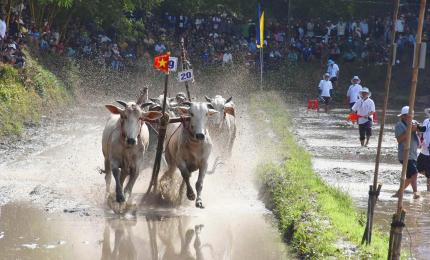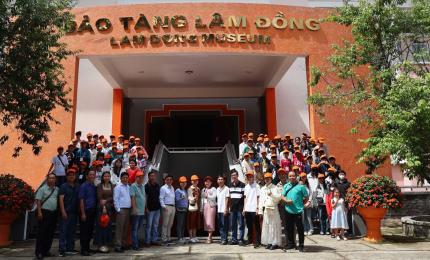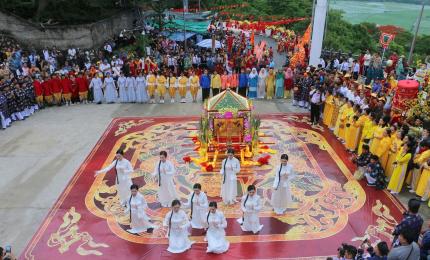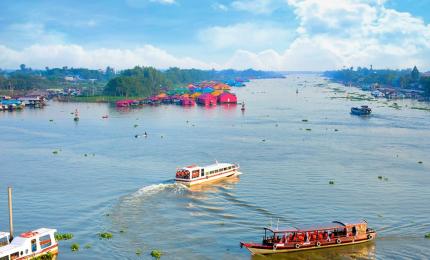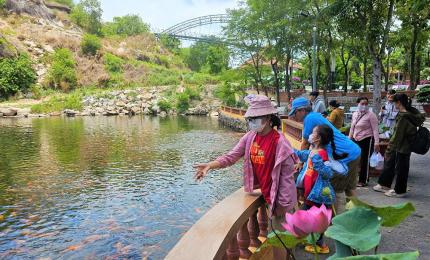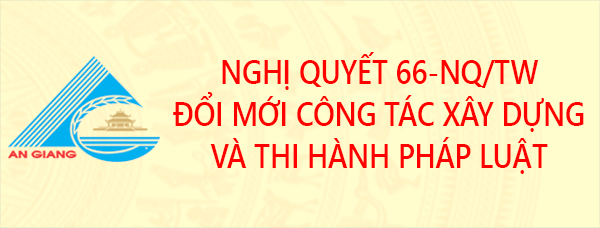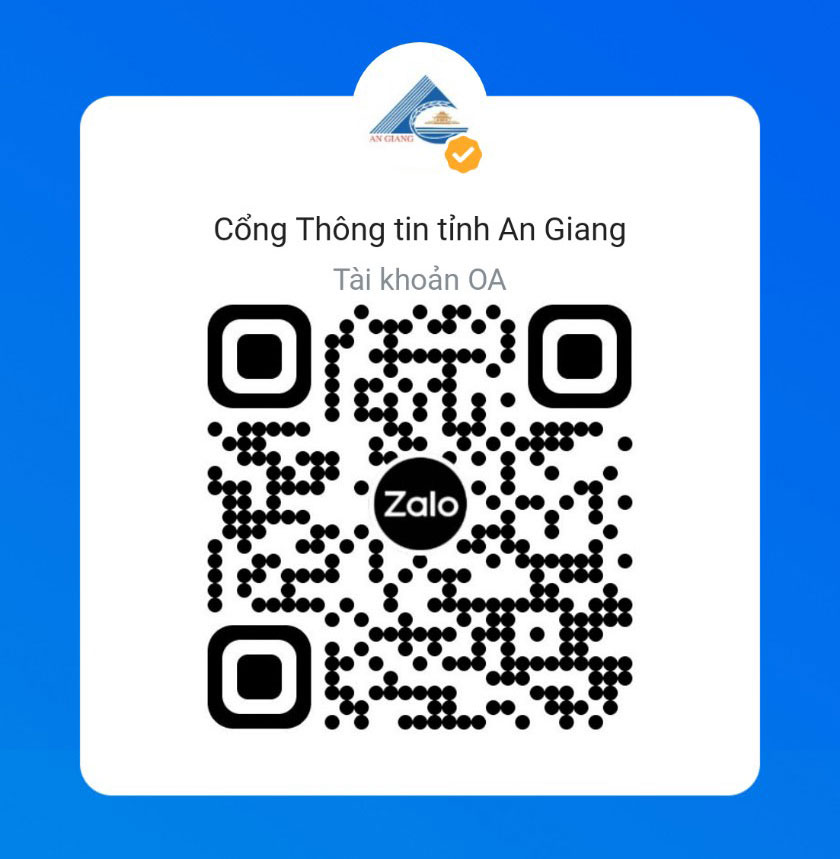In 1802, the Nguyen Dynasty was established, creating a unified administrative system for the country from the North to the South. Initially, the Southern region was divided into prefectures under Gia Dinh Province(1) (belonging to Bien Hoa and Phiên An (later renamed Gia Dinh); Dinh Tuong, Vinh Thanh (comprising Vinh Long and An Giang); Ha Tien).

In the Southern region at that time, waterways were still the main traffic route, basically serving all activities from people's lives to national defense, military, and diplomacy. The waterway system was the decisive factor creating the geostrategic position of the Southwestern border region with national defense - economic centers such as: Ha Tien, Chau Doc, Tan Chau, Hong Ngu, Thong Binh, Quang Hoa.
Based on the natural characteristics and the characteristics of the residents and the socio-economy of the South at that time, the Nguyen Dynasty gradually recognized the important role of the locations adjacent to the territories and territorial waters of Chan Lap (Cambodia) and Xiem La (Thailand).
Strategically, the Nguyen Dynasty determined: "Gia Dinh Citadel serves as the border region, Chau Doc new frontier as the distant borderland, Ha Tien as the extreme frontier of the Southern border". In which, Chau Doc and Ha Tien were considered the most important defense command centers for the entire Southwestern border of the country.
Therefore, when appointing Nguyen Van Thoai to hold the position of Vinh Thanh Governor in 1817, King Gia Long carefully instructed: "Vinh Thanh is a land bordering the country of Cambodia, the essential thing in governing is to ensure peace within the country and foreign countries must respect".
The importance of the Chau Doc - Ha Tien border required a huge amount of resources to preserve and develop. This further motivated the Nguyen Dynasty to seek solutions. In the last years of Gia Long Dynasty, the reclamation and village establishment in the Southern region was vigorously promoted, but the vast strip of land in Long Xuyen Quadrangle was still left untouched.
The problem of drainage and washing away alum in this area became urgent. At the same time, the need to connect the Southwestern coastal centers from Long Xuyen (Ca Mau), Rach Gia, Ha Tien with the centers of the Mekong River, My Tho, Gia Dinh in terms of national defense, transportation and commerce was also very urgent.
Based on the defense ideas of his ancestors, King Gia Long also showed a strong breakthrough when he wanted to dredge a canal parallel to the border of Chan Lap, connecting Chau Doc - Ha Tien, serving the cause of defending the country and increasing resources for the "new border land”.
In 1816, the Nguyen Dynasty also recognized Chau Doc as an important place on the border and wanted to set up a large fort to guard it. Therefore, King Gia Long ordered Deputy General of the Left Army Nguyen Van Xuan, Vinh Thanh Governor Luu Phuoc Tuong and Nguyen Duc Si to oversee the construction of Chau Doc fort to protect Ha Tien and respond to Nam Vang (Phnom Penh). During the construction of the fort, the Nguyen Dynasty ordered Luu Phuoc Tuong and Nguyen Duc Si to measure the terrain and draw a map to present.
After looking at the map, King Gia Long told his courtiers: “This land is now opened to the river to go straight to Ha Tien, farming and trading are both profitable. Later on, the population will be dense, the land will be expanded, and it can become a large town”. It can be seen that the idea of digging Vinh Te canal was most clearly initiated at this time.
After the Thoai Ha canal was built, King Gia Long saw that the time had come to start dredging the waterway connecting Chau Doc with Ha Tien. The person that King Gia Long “chosen” to entrust with this important task was none other than the Governor Nguyen Van Thoai. In early 1819, the Nguyen Dynasty issued an edict to Mac Cong Du to examine and measure from Ha Tien to Chau Doc River and then draw a map to present to the King.
In September of the year Ky Mao 1819, King Gia Long ordered the Governor of Vinh Thanh, Nguyen Van Thoai, to be the Director, to dig a canal from Chau Doc to Ha Tien. Before ordering the Governor of Gia Dinh and the Governor of Vinh Thanh, Nguyen Van Thoai, to prepare to start construction, King Gia Long issued an edict to the people of Vinh Thanh as follows: "Digging this river is a very difficult task. The state's policies and border plans are all of great importance. Even though you are having a hard time today, it will be beneficial for all generations. So tell each other not to be afraid of hardship."
Then King Gia Long issued an edict to the King of Cambodia: "Your country borders Vinh Thanh. Now digging this river will not only benefit the Vietnamese people, but also your country immensely. The King should convene the People, tell them about the idea of working hard once and for all, making the people happy to work, so that they can quickly succeed. Anyone from the mandarins and below who does not obey orders, will be ruled by Dong Phu according to military law."
It can be seen that more than 200 years ago, with strategic vision, the Nguyen Dynasty led by King Gia Long paved the way for methods to protect the country and pacify the people, especially in the remote Southwestern border region. This policy created the most magnificent project in Vietnam in the first half of the 19th century - Vinh Te Canal.
Excerpt from "Propaganda outline for the 200th anniversary of Vinh Te canal completion of (1824 - 2024) and the 198th anniversary of Ms. Chau Thi Te’s death (1826 - 2024)"
Source: tuyengiaoangiang.vn
Translation by Hoang Oanh
